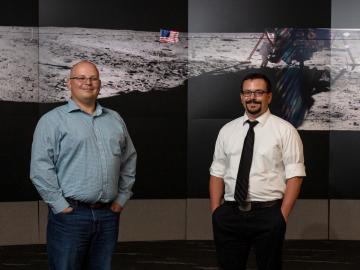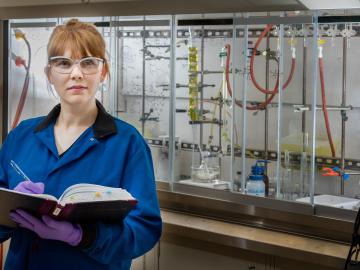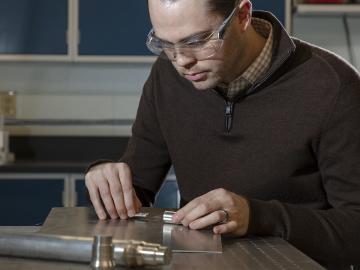
Filter News
Area of Research
- Advanced Manufacturing (2)
- Biological Systems (1)
- Biology and Environment (4)
- Clean Energy (39)
- Climate and Environmental Systems (1)
- Computer Science (2)
- Fusion Energy (2)
- Materials (31)
- National Security (3)
- Neutron Science (14)
- Nuclear Science and Technology (3)
- Quantum information Science (1)
- Supercomputing (24)
News Type
Date
News Topics
- 3-D Printing/Advanced Manufacturing (9)
- Advanced Reactors (2)
- Artificial Intelligence (7)
- Big Data (2)
- Bioenergy (9)
- Biomedical (4)
- Biotechnology (1)
- Clean Water (3)
- Composites (1)
- Computer Science (19)
- Cybersecurity (4)
- Energy Storage (4)
- Environment (12)
- Exascale Computing (2)
- Frontier (2)
- Fusion (2)
- Grid (2)
- Isotopes (1)
- Machine Learning (2)
- Materials Science (8)
- Mercury (1)
- Microscopy (1)
- Nanotechnology (3)
- Neutron Science (10)
- Nuclear Energy (6)
- Physics (3)
- Quantum Science (7)
- Security (2)
- Space Exploration (1)
- Summit (7)
- Sustainable Energy (6)
- Transportation (5)
Media Contacts

In Hong Wang’s world, nothing is beyond control. Before joining Oak Ridge National Laboratory as a senior distinguished researcher in transportation systems, he spent more than three decades studying the control of complex industrial systems in the United Kingdom.

Just minutes after taking one small step for man, one giant leap for mankind, Neil Armstrong deviated from NASA’s meticulously crafted flight plan for the Apollo 11 mission. According to NASA’s lunar surface operations plan, Armstrong’s top priority after his famous first steps should have been to immediately take a contingency sample—a small sample of soil—to provide scientists at least a piece of the moon if the mission had to be abandoned early.

Sometimes solutions to the biggest problems can be found in the smallest details. The work of biochemist Alex Johs at Oak Ridge National Laboratory bears this out, as he focuses on understanding protein structures and molecular interactions to resolve complex global problems like the spread of mercury pollution in waterways and the food supply.

In the shifting landscape of global manufacturing, American ingenuity is once again giving U.S companies an edge with radical productivity improvements as a result of advanced materials and robotic systems developed at the Department of Energy’s Manufacturing Demonstration Facility (MDF) at Oak Ridge National Laboratory.
The Department of Energy’s Oak Ridge National Laboratory has named Marcel Demarteau as Physics Division Director, effective June 17.

Oak Ridge National Laboratory welcomed seven technology innovators to join the third cohort of Innovation Crossroads, the Southeast’s only entrepreneurial research and development program based at a U.S. Department of Energy national laboratory.

An organic chemist at Oak Ridge National Laboratory, Santa Jansone-Popova focuses on the fundamental challenges of chemical separations that translate to world-changing solutions for clean water and sustainable energy.

The Department of Energy has established the Innovation Network for Fusion Energy program, or INFUSE, to encourage private-public research partnerships for overcoming challenges in fusion energy development.

A team led by scientists at the Department of Energy’s Oak Ridge National Laboratory explored how atomically thin two-dimensional (2D) crystals can grow over 3D objects and how the curvature of those objects can stretch and strain the

With operating licenses for nearly all nuclear power plants set to expire in the 2030s and 40s—a pending loss that would affect a fifth of the country’s electricity supply—U.S. utilities will need to find a way to respond to what has been called the “nuclear cliff.”


